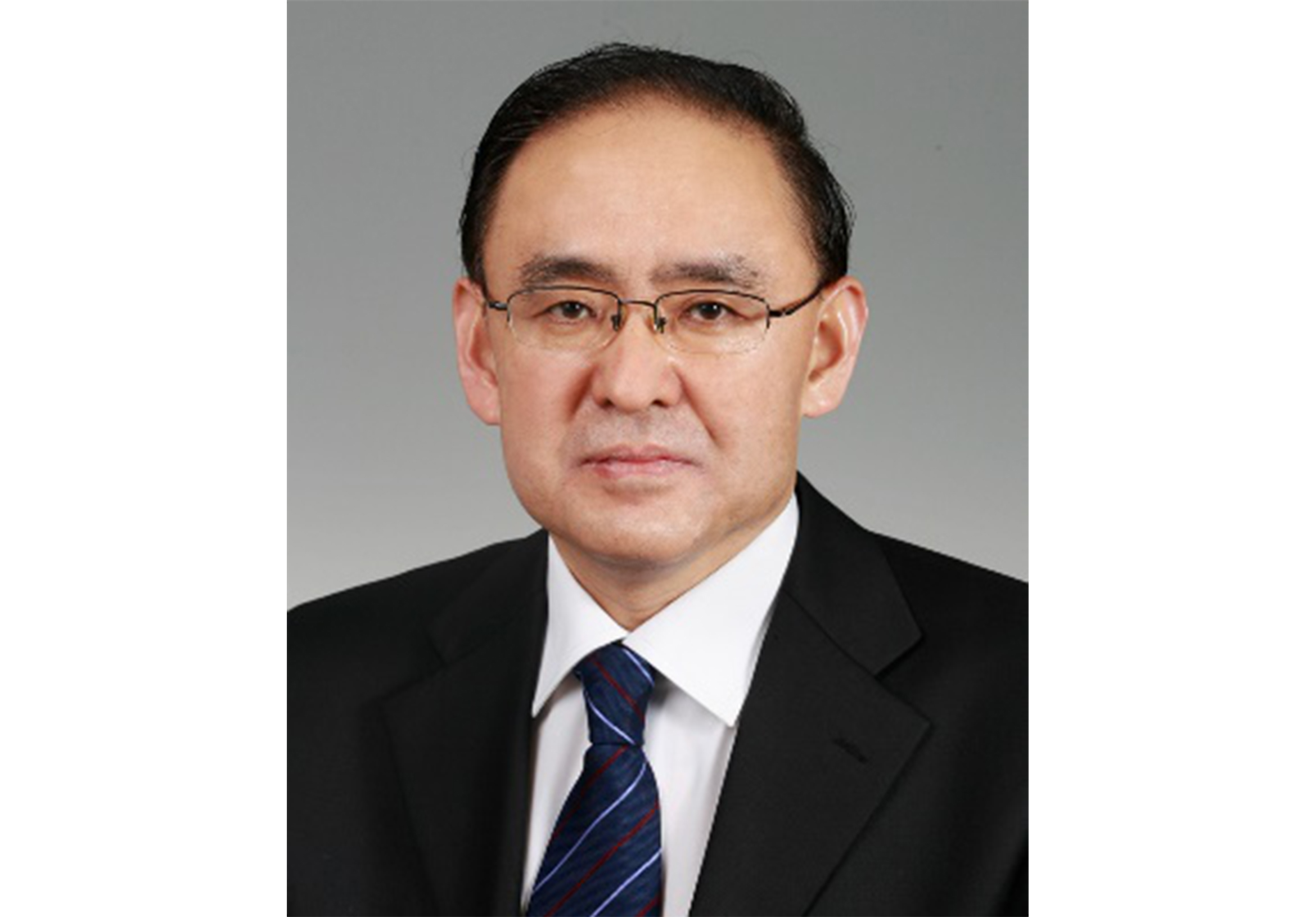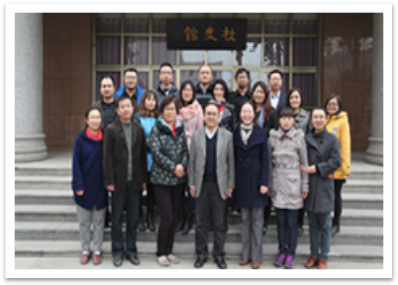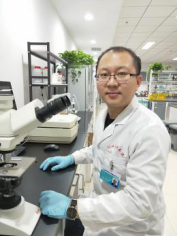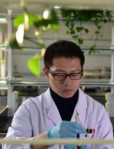一、PI简介
 段惠军,博士,教授,博士生导师。曾任河北省政协副主席,河北省科协主席,中华医学会医学教育分会常委,中华医学会病理学分会委员,河北省高等教育学会副会长,河北省医学会副会长,mg游戏平台电子手机版下载副校长,河北省医学会病理学分会主任委员,河北省医师协会病理医师分会主任委员。
段惠军,博士,教授,博士生导师。曾任河北省政协副主席,河北省科协主席,中华医学会医学教育分会常委,中华医学会病理学分会委员,河北省高等教育学会副会长,河北省医学会副会长,mg游戏平台电子手机版下载副校长,河北省医学会病理学分会主任委员,河北省医师协会病理医师分会主任委员。
二、研究方向
(一)糖尿病肾病的细胞信号传导调控及分子机制
多年来,本团队一直致力于糖尿病肾病发病机制及相关防治研究,首次提出JAK/STAT和MAPK信号转导通路与糖尿病肾病在糖尿病肾病发病中起重要作用,干预此信号通路的活化对糖尿病肾病具有明显治疗作用。同时发现AngⅡ阻断药和他汀类调脂药物能够抑制高糖状态下肾脏细胞JAK/STAT、MAPK两种信号转导通路的活化,对糖尿病肾病起到保护作用。近期我们的研究表明SOCS-1(一种内源性JAK/STAT信号抑制蛋白)基因过表达明显抑制肾脏细胞JAK/STAT信号通路的活化,对糖尿病肾损伤具有明显的保护作用。目前,本团队从体内外探讨TXNIP、PGC-1α等基因在糖尿病肾小管上皮细胞凋亡、表型转化、炎症反应等中的作用以及相关分子机制,观察抗氧化肽SS-31、SIRT1激活剂SRT1720和抑制剂EX527对信号通路传导及糖尿病肾脏的作用,为阐明糖尿病肾病发病机制以及寻找糖尿病肾病治疗的新靶点提供科学依据,为糖尿病肾病防治提供新的作用靶点和思路。
(二)肾小管-间质性疾病发病机制研究
肾间质损伤是公认的肾小球疾病直至终末肾衰竭的重要原因和最后共同通路,而引起肾小管间质损伤的机制众多。阐明肾间质损伤的机制对于防治肾脏疾病进展具有重要意义,并且对临床治疗的探索起着十分重要的作用。本课题组利用UUO模型、5/6肾切除模型,以及体外培养的肾小管上皮细胞对Smad信号通路在肾小管-间质纤维化过程中的作用进行了系列研究。结果发现,Smad信号通路以及结缔组织生长因子(CTGF)在肾小管-间质纤维化过程中发挥重要作用,针对Smad信号分子和CTGF的调控,可有效阻止纤维化的发展。目前,团队从non-coding RNA角度,寻找与肾小管-间质损伤有关的LncRNA和miRNA,并探讨与TGF-β/CTGF/Smad等信号通路的关系,为临床防治肾小管-间质损伤寻找可靠治疗靶点。
三、代表性论文
1 | Song S, Qiu D, Shi Y*, Wang S, Zhou X, Chen N, Wei J, Wu M, Wu H, Duan H*. Thioredoxin-interacting protein deficiency alleviates phenotypic alterations of podocytes via inhibition of mTOR activation in diabetic nephropathy. J Cell Physiol, 2019, doi: 10.1002/jcp.28317. |
2 | Liu J, Feng X, Tian Y, Wang K, Gao F, Yang L, Li H, Tian Y, Yang R, Zhao L, Miao X, Huang J, Liu Q, Zhang W, Li Y, Wang C, Duan H*, Liu S*. Knockdown of TRIM27 expression suppresses the dysfunction of mesangial cells in lupus nephritis by FoxO1 pathway. J Cell Physiol, 2019, 234(7):11555-11566. |
3 | Song S, Qiu D, Luo F, Wei J, Wu M, Wu H, Du C, Du Y, Ren Y, Chen N, Duan H*, Shi Y*. Knockdown of NLRP3 alleviates high glucose or TGFB1-induced EMT in human renal tubular cells. J Mol Endocrinol, 2018, 61(3):101-113. |
4 | Du C, Ren Y, Yao F, Duan J, Zhao H, Du Y, Xiao X, Duan H*, Shi Y*. Sphingosine kinase 1 protects renal tubular epithelial cells from renal fibrosis via induction of autophagy. Int J Biochem Cell Biol, 2017, 90:17-28. |
5 | Du C, Yao F, Ren Y, Du Y, Wei J, Wu H, Duan H*, Shi Y*. SOCS-1 is involved in TNF-α-induced mitochondrial dysfunction and apoptosis in renal tubular epithelial cells. Tissue Cell, 2017, 49(5):537-544. |
6 | Yao M, Gao F, Wang X, Shi Y, Liu S, Duan H*. Nox4 is involved in high glucose-induced apoptosis in renal tubular epithelial cells via Notch pathway. Mol Med Rep, 2017, 15(6):4319-4325. |
7 | Li F, Li L, Hao J, Liu S, Duan H*. Src Homology 2 Domain-Containing Inositol 5'-Phosphatase Ameliorates High Glucose-Induced Extracellular Matrix Deposition via the Phosphatidylinositol 3-Kinase/Protein Kinase B Pathway in Renal Tubular Epithelial Cells. J Cell Biochem, 2017, 118(8):2271-2284. |
8 | Li F, Li L, Cheng M, Wang X, Hao J, Liu S, Duan H*. SHIP, a novel factor to ameliorate extracellular matrix accumulation via suppressing PI3K/Akt/CTGF signaling in diabetic kidney disease. Biochem Biophys Res Commun, 2017, 482(4):1477-1483. |
9 | Zhao X, Hao J, Duan H*, Rong Z, Li F. Phosphoinositide 3-kinase/protein kinase B/periostin mediated platelet-derived growth factor-induced cell proliferation and extracellular matrix production in lupus nephritis. Exp Biol Med (Maywood), 2017, 242(2):160-168. |
10 | Du C*, Wu M, Liu H, Ren Y*, Du Y, Wu H, Wei J, Liu C, Yao F, Wang H, Zhu Y, Duan H*, Shi Y*. Thioredoxin-interacting protein regulates lipid metabolism via Akt/mTOR pathway in diabetic kidney disease. Int J Biochem Cell Biol, 2016, 79:1-13. |
11 | Kang L, Zhao H, Chen C, Zhang X, Xu M, Duan H*. Sappanone A protects mice against cisplatin-induced kidney injury. Int Immunopharmacol, 2016, 38:246-51. |
12 | Chen N, Hao J, Li L, Li F, Liu S, Duan H*. Carboxy-terminal modulator protein attenuated extracellular matrix deposit by inhibiting phospho-Akt, TGF-β1 and α-SMA in kidneys of diabetic mice. Biochem Biophys Res Commun, 2016, 474(4):753-760. |
13 | Wu H, Deng X, Shi Y, Su Y, Wei J, Duan H*. PGC-1α, glucose metabolism and type 2 diabetes mellitus. J Endocrinol, 2016, 229(3):R99-R115. |
14 | Gao F, Yao M, Cao Y, Liu S, Liu Q, Duan H*. Valsartan ameliorates podocyte loss in diabetic mice through the Notch pathway. Int J Mol Med, 2016, 37(5):1328-36. |
15 | Wu Z, Bai F, Fan L, Pang W, Han R, Wang J, Liu Y, Yan X, Duan H, Xing L. Coexpression of receptor tyrosine kinase AXL and EGFR in human primary lung adenocarcinomas. Hum Pathol, 2015, 46(12):1935-44. |
16 | Du C, Shi Y, Ren Y, Wu H, Yao F, Wei J, Wu M, Hou Y, Duan H*. Anthocyanins inhibit high-glucose-induced cholesterol accumulation and inflammation by activating LXRα pathway in HK-2 cells. Drug Des Devel Ther, 2015, 9:5099-113. |
17 | Wu H, Shi Y, Deng X, Su Y, Du C, Wei J, Ren Y, Wu M, Hou Y, Duan H*. Inhibition of c-Src/p38 MAPK pathway ameliorates renal tubular epithelial cells apoptosis in db/db mice. Mol Cell Endocrinol, 2015, 417:27-35. |
18 | Ren Y, Du C, Yan L, Wei J, Wu H, Shi Y*, Duan H*. CTGF siRNA ameliorates tubular cell apoptosis and tubulointerstitial fibrosis in obstructed mouse kidneys in a Sirt1-independent manner. Drug Des Devel Ther, 2015, 9:4155-71. |
19 | Xing L, Liu Q, Fu S, Li S, Yang L, Liu S, Hao J, Yu L, Duan H*. PTEN Inhibits High Glucose-Induced Phenotypic Transition in Podocytes. J Cell Biochem, 2015, 116(8):1776-84. |
20 | Cao Y, Hao Y, Li H, Liu Q, Gao F, Liu W, Duan H*. Role of endoplasmic reticulum stress in apoptosis of differentiated mouse podocytes induced by high glucose. Int J Mol Med, 2014, 33(4):809-16. |
21 | Liu Q, Xing L, Wang L, Yao F, Liu S, Hao J, Liu W, Duan H*. Therapeutic effects of suppressors of cytokine signaling in diabetic nephropathy. J Histochem Cytochem, 2014, 62(2):119-28. |
四、团队人员
| 王建星 |
| 王硕 |
Jianxing Wang | Shuo Wang | ||
在读博士生 | 在读博士生 | ||
| 王宇涵 |
| 邱铎军 |
Yuhan Wang | Duojun Qiu | ||
在读博士生 | 在读博士生 | ||
| 方晓旭 | ||
Xiaoxu Fang | |||
在读硕士 | |||
1197415044@qq.com |
五、联系我们
段惠军
Huijun Duan, Ph. D.
mg游戏平台电子手机版下载医学与健康研究院代谢性疾病与肿瘤研究中心,河北省石家庄市中山东路361号,050017
Center of Metabolic Diseases and Cancer Research, Institute of Medical and Health Science, Hebei Medical University. No.361 East Zhongshan Road. Shijiazhuang, Hebei 050017.
Laboratory Contact Phone: 86(311)-86266942; Room number: 1402








